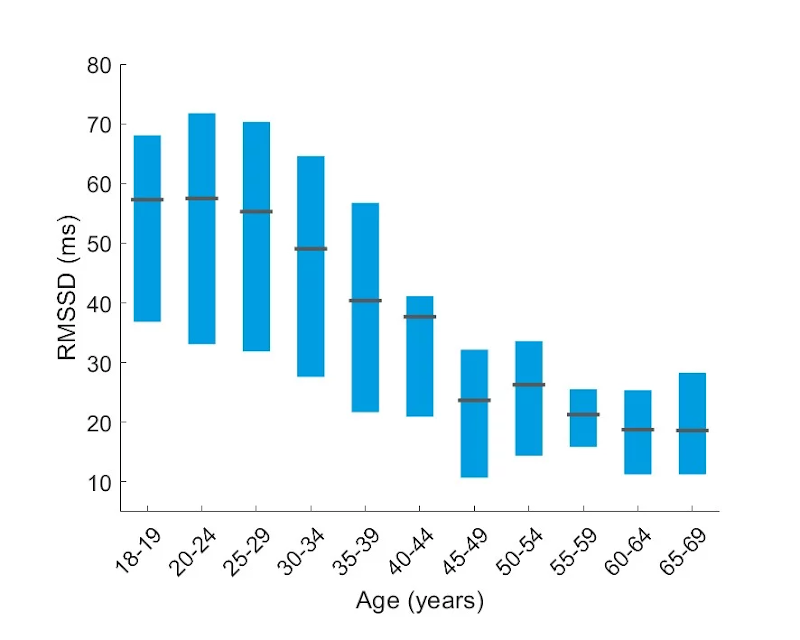Why Heart Rate Variability (HRV) Is the Metric Every High Performer Should Track
When you’re chasing excellence—whether it’s on the golf course, in the gym, or in the boardroom—you want every possible advantage. Most people track the obvious: speed, weight, sales numbers, hours worked. But there’s a hidden performance metric that reveals more about your readiness, resilience, and long-term health than almost anything else in every situation: Heart Rate Variability (HRV).
What Exactly Is HRV?
HRV is the measure of the variation in time between your heartbeats. If your heart is beating at 60 beats per minute, that doesn’t mean it’s beating exactly once every second. One beat might come at 0.96 seconds, the next at 1.05. Those micro-variations are naturally occurring and what we call HRV.
Why does this matter? HRV is one of the most accurate ways to gauge the balance of your autonomic nervous system (ANS)—the body’s control center for stress and recovery. Now, there are two parts to your ANS:
- Sympathetic nervous system (fight or flight): Prepares you for action, stress, and intensity.
- Parasympathetic nervous system (rest and digest): Supports recovery, restoration, and healing.
The higher your HRV, the better your nervous system can smoothly shift gears between stress and recovery, signifying physiological adaptability and resilience. A low HRV suggests your body is locked in stress mode, less able to recover, and potentially on the path to fatigue, illness, or burnout.
Why HRV Matters for High Performers
1. It’s the Ultimate Stress Barometer
Similar to a weather report, HRV can tell you about bad weather before you experience it. You may not always feel when your body is under strain, but a dip in HRV can reveal that stress—physical, mental, or emotional—is building before you notice symptoms. That makes HRV one of the best early warning systems for overtraining, burnout, or health issues.
2. It Helps You Train Smarter, Not Just Harder
High performers, like me and you, thrive on pushing limits. But the real secret is knowing when to push and when to pull back. HRV gives you that feedback. High HRV days are green lights for intensity. Low HRV days? Time to focus on recovery, mobility, or lighter work. This approach improves performance while simultaneously reducing risk of injury and fatigue.
3. It’s Linked to Long-Term Health and Longevity
HRV isn’t just about today’s workout or tomorrow’s meeting—it’s about the bigger picture. Research consistently shows that higher HRV is associated with:
- Better cardiovascular health
- Reduced risk of diabetes and metabolic disease
- Improved mental health and resilience
- Lower risk of early mortality
Put simply: the habits that improve HRV today are the same habits that help prevent chronic disease and extend healthspan.
Here are normal Healthy HRV Ranges According to Neurofeedback Luxembourg, 2025.

How to Put HRV to Work
- Track consistently. Use a wearable (Whoop, Oura, Garmin, Apple Watch, Polar, etc.) and measure daily, ideally in the morning.
- Look for trends, not single numbers. One low day isn’t a red flag; it’s the downward pattern that matters. So don’t sweat it over one bad day.
- Adjust based on readiness. Use HRV as a guide to decide when to push hard and when to prioritize recovery.
- Experiment. Test recovery strategies like sleep optimization, exercise, nutrition, mindfulness, or active recovery—and watch how your HRV responds. Keep in mind that you should keep up these strategies for a few weeks to see whether or not it really makes a difference!
The Bottom Line
For anyone striving for peak performance in their lives, HRV is more than just a data point—it’s that personal weather report you’re looking for. It tells you not only how ready you are to perform today but also how well your body is protecting your health for the long run.
High HRV = adaptability, resilience, and a lower risk of disease.
Low HRV = stress overload, poor recovery, and potential breakdown.
If you want to stay sharp, strong, and sustainable in your pursuit of excellence, don’t just track the obvious. Track HRV—and let it guide you toward smarter training, better recovery, and long-lasting success.

